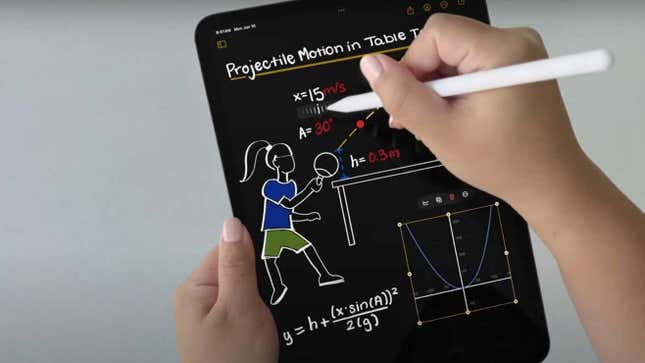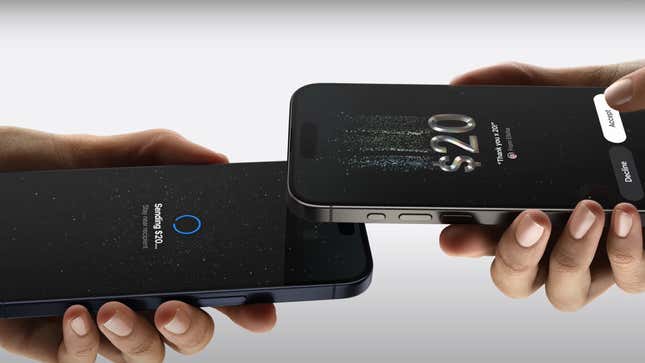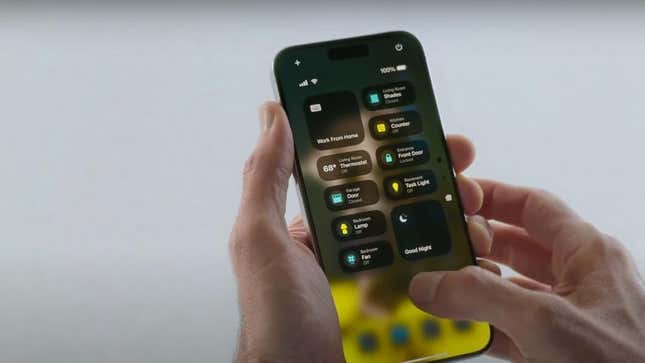Tech
Everything Apple Tried to Kill at WWDC 2024

This year’s WWDC was loaded with announcements. We learned more about Apple’s new AI, Apple Intelligence, and big updates to MacOS, iOS, WatchOS, Apple TV+, and Vision Pro. If there’s one thing on my mind throughout the keynote announcements, it was, “But X app already does that.” By the end of the event, I had lost count of how many third-party apps and services Apple tried to kill yesterday. So, I decided to pen them all down.
Meta Quest Pro
Even though the $3,500 price tag alone might still be enough to convince consumers to opt for the $500 Meta Quest 3 instead, it can’t be denied that Apple is finally in the position to give similar VR headsets some competition with VisionOS 2 for its Vision Pro headset. Seeing how it’s just been four months since the Vision Pro was released, it’s clear that the folks behind the Cupertino company felt like the lack of apps or practical use cases on the headset was an issue they had to rush to fix.
The keynote highlighted Spatial Computing on VisionOS 2, which aims to “reinvent” how you see your photos by displaying them life-size, with more fidelity, and increased realism. You can view them in 3D and take advantage of SharePlay in the Photos app to enjoy them with your long-distance friends. The Mac Virtual Display benefits from an upgrade, too. It will see an improved resolution and size and can be expanded to wrap around you like a massive virtual workspace.
LockID
You no longer have to look for third-party solutions to lock apps on your iPhone. iOS 18 will feature a built-in feature to lock the apps of your choice so that they’d require user authentication if anyone tries to access them. Information about the app won’t show up in other places on your phone, such as Search or Notifications.
iOS 18 is also killing services that hide apps. You’d be able to pick an app of your choice and hide it in a secret Hidden folder that won’t be visible to friends who borrow your phone.
TeamViewer
SharePlay is getting two new updates, too. At the moment, it only allows screen sharing on iOS devices. Now, you can remotely control someone’s iPhone or iPad after asking them for permission, which is exactly what TeamViewer lets you do. Another update will let you tap and draw on your screen while it’s being shared so you can guide someone on what they should do on their device.
Otter
SmartScript is my second favorite announcement after Math Notes. I can imagine it being a complete game-changer for note-taking. Using a machine learning model will refine your handwriting as you quickly scribble down your thoughts. It will still be your handwriting but will look more legible.
You’ll be able to add to your notes by pasting text from external sources and have it automatically convert to your handwriting. SmartScript will also let you scratch over a piece of text to erase it. If you wish to add to something you’ve already penned down, you can manually push a sentence to one side to add text before/after it.
Calculator Apps

Interestingly, the Calculator app announcement impressed me the most in the entire keynote. First, the iPad is finally getting a Calculator app, so you can delete the third-party calculator you’re using for your iPad. Second, the app will see a new Math Notes feature, which will probably kill other calculator apps with limited functionality.
With Math Notes, you can write any mathematical expression (via your Apple Pencil) and see the result pop up as soon as you write an equals sign in front of it. It will also let you tweak the expression and have the result change in front of your eyes.
You can also display the result visually by having Math Notes generate a graph. The feature that got the math nerd in me most excited is that you can enable a slider to show above one of your variables so you can play around with it and see how it changes your graph’s curve.
Android
Apple clearly tried taking a stab at Android with its new messaging features. So far, users were allowed to react using one of the standard five reactions on iMessage. This will change with tapbacks on iOS 18, which will give users a wide variety of reactions to choose from.
Another Android messaging feature, scheduled messages, is also coming to iOS 18. You’ll also be able to use text effects such as bold, underline, italics, or strikethrough.
Windows 11
The Cupertino company also tried taking a stab at Windows 11 with its tile feature on the new MacOS Sequoia. Now, when you’re trying to multi-task on your Mac, you can bring a window to the edge of your screen, which will suggest where each window should go. It will also automatically size them for you.
Venmo

The new Tap to Cash feature introduced on iOS 18 will likely replace how iPhone users manage transactions. With Tap to Cash, users can pay someone with Apple Cash just by bringing their iPhone close to the recipient’s iPhone. It’s quick, private, and doesn’t require an exchange of email addresses, phone numbers, or Venmo IDs.
Google Meet
FaceTime is introducing the built-in backgrounds from Google Meet on FaceTime video calls. You can also set any of your photos as the backdrop to replace the pile of mess behind you.
1Password
Apple is finally launching its password manager app on iOS 18, iPadOS 18, and MacOS 15. It’s called ‘Passwords’ and aims to compete against services such as 1Password. It will allow users to import their passwords from other password manager apps, facilitate verification codes, and act as an authentication app for two-factor authorization. The Passwords app will also work on Apple Vision Pro headsets and Windows devices.
Amazon Echo Hub

SVP of Software Engineering Craig Federighi demoed a revamped Control Center on iOS 18, where we’d now be able to scroll through multiple pages instead of the standard page we currently have. Users can swipe up on their Control Center to display a second page for music playback and again for a third page on smart home controls. A continuous swipe can take one through all Control Center pages or groups. A plus sign at the top-left gives access to many more controls to choose from and add to the Control Center with a single tap.
With this ease at your fingertips, I can imagine consumers preferring to control their smart home devices on their phones rather than walking to a dedicated smart home hub.
Google Gemini
Apple has recently been teasing its AI, Apple Intelligence, which was unveiled at WWDC yesterday. These features are likely going to give Google Gemini tough competition. The biggest selling point of the AI part of the keynote was its newfound ability to understand context. You’ll soon be able to tell your iPhone with iOS 18, “Play the song that Kyle texted me” or “Make this photo warmer,” and it will do it for you.
Apple is bringing context to notifications, too. It will understand all your pop-ups, analyze them intelligently, and reorder them priority-wise so you know what task to tackle in what order.
Grammarly
The writing tools on Apple’s AI for iOS 18, iPadOS 18, and MacOS 15 have immense potential to replace Grammarly. These tools can rewrite, summarize, or proofread what you’ve written. It will be available everywhere on your Apple device, including Mail, Notes, Keynote, and third-party apps.










/cdn.vox-cdn.com/uploads/chorus_asset/file/24100829/226345_Nest_Doorbell_wired_JTuphy_0006.jpg)